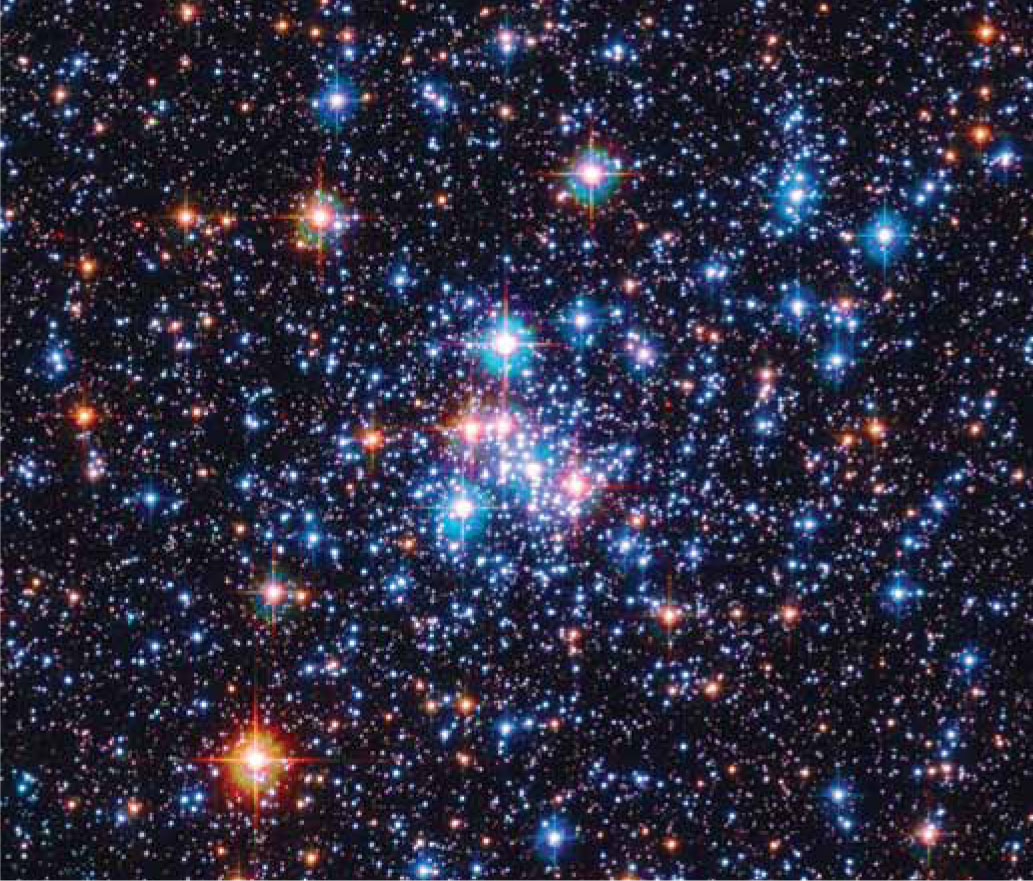CHAPTER
19

Stellar Evolution: On and After the Main Sequence
LEARNING GOALS
By reading the sections of this chapter, you will learn
| 19–1 | How a main-sequence star changes as it converts hydrogen to helium |
| 19–2 | What happens to a star when it runs out of hydrogen fuel |
| 19–3 | How aging stars can initiate a second stage of thermonuclear fusion |
| 19–4 | How H-R diagrams for star clusters reveal the later stages in the evolution of stars |
| 19–5 | The two kinds of stellar populations and their significance |
| 19–6 | Why some aging stars pulsate and vary in luminosity |
| 19–7 | How stars in a binary system can evolve very differently from single, isolated stars |
Imagine a world like Earth, but orbiting a star more than 100 times larger and 2000 times more luminous than our Sun. Bathed in the star’s intense light, the surface of this world is utterly dry, airless, and hot enough to melt iron. If you could somehow survive on the daytime side of this world, you would see the star filling almost the entire sky.
This bizarre planet is not a creation of science fiction—it is our own Earth some 7.6 billion years from now. The bloated star is our own Sun, which in that remote era will have become a red giant.
In this chapter, we will learn how a main-sequence star evolves into a red giant when all the hydrogen in its core is consumed. The star’s core contracts and heats up, but its outer layers expand and cool. In the hot, compressed core, helium fusion becomes a new energy source. The more massive a star, the more rapidly it consumes its core’s hydrogen and the sooner it evolves into a giant.
The interiors of stars are hidden from our direct view, so much of the story in this chapter is based on theory. We back up those calculations with observations of star clusters, which contain stars of different masses but roughly the same age. (An example is the cluster shown here, many of whose stars have evolved into luminous red giants.) Other observations show that some red giant stars actually pulsate, and that stars can evolve along very different paths if they are part of a binary star system.